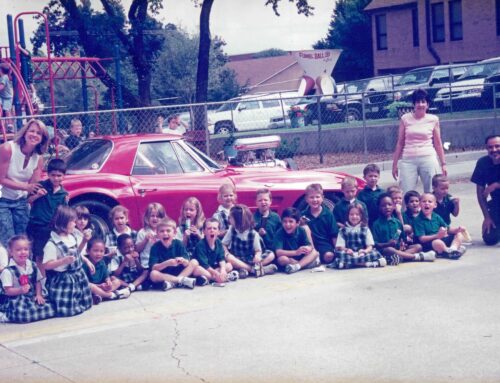Including a trip to hell and back
They all started strong — well-manicured and upwardly mobile types.
That lasted quite awhile. But then there were the inevitable mid-life crises, and with that came calamity: some drugs, some hookers, rap sheets more colorful than a Friday night in Deep Ellum, and the occasional foray into motorcycle gangs and other radical groups.
Then, before things got too out of hand, caring friends stepped in, in time performing an almost miraculous intervention. It took some years, but those nurturing types eventually brought these three Dallas jewels back to themselves.
Who are these three lucky souls with to-hell-and-back histories?
Well, they’re actually neighborhoods — Munger Place, Swiss Avenue and Peak’s Suburban Addition historic districts.
This month and next, these neighborhoods are celebrating some pretty important milestones. Swiss and Munger, which started off as the same development, are both commemorating 100-year anniversaries. Peak’s Suburban Addition, part of the larger Millcreek neighborhood, is the old man of the bunch at 150.
A look into these neighborhoods’ histories (see detailed timeline, starting on page xx) gives us an appreciation for how far they’ve come. And few in these communities know that better than Virginia McAlester.
McAlester’s late parents are Dorothy and Wallace Savage. Wallace was mayor of Dallas for two terms (one pro-tem) in the 1950s and president of the Swiss Avenue Homeowners Association “for the better part of 15 years.” Dorothy, though less high profile, was just as involved in Dallas affairs.
“I grew up thinking everybody’s parents went to zoning cases every two or three weeks,” says McAlester, who lives in the family home her grandfather built in 1920. “They came home crying if they lost it; came home joyous if they won it.”
More and more, tears were involved.
What started as slow decline during the Great Depression had accelerated dramatically by the 1960s and ’70s. Because of a dearth of zoning laws, many of the neighborhoods’ grand old mansions — originally single-family homes for Dallas’ elite — had been divided into apartments, and those apartments attracted increasingly sordid and temporary residents.
“People would come from East Texas, rent a room for a few weeks until they found job and got themselves off the ground,” says McAlester, who co-authored “A Field Guide to American Houses” with her husband, Lee, among a number of other books relating to architecture and history in the United States.
Looking back, McAlester has a pretty good sense of humor about what she and her friends and family went through trying to save these neighborhoods. She grins as she tells stories about motorcycle gangs living in upstairs apartments, a “rumored house of ill repute” on Swiss Avenue, and a house where they discovered 40 phone lines, leaving them to believe it had been a “booking joint.”
She remembers one fearless long-time resident who tried to get prostitutes out of Munger Place.
“She would get out her broom and run down the sidewalk trying to brush them off,” McAlester says with a laugh.
Another reminiscence that has seared its way into her memory is the house with the leaking commode — rather than fix it, the residents sealed off the room beneath it.
And then there were the Bois D’art Patriots, a militant (for Dallas) political group prone to dramatic ways of getting attention for their causes. One story says they let loose several jars of cockroaches in a City Council meeting; another tells of an East Dallas Design Committee meeting where one member pounded a table with a dead rat in response to the chairman breaking out his gavel.
“They were sort of this semi-radical ’70s group, headquartered in Munger Place,” McAlester says. “But they actually did a lot of good things. They collected bikes and toys for kids, helped tenants with problems — they just made you a little nervous,” she adds with a laugh.
Though these stories make for amusing anecdotes now, longtime residents such as McAlester and her parents were understandably heartbroken at the time. All that started to change, however, in 1972, when Dallas’s new Director for Urban Design, Wei Ming Lu, called Wallace Savage with a thought — Swiss Avenue should be a historic district, he said.
Having a high-ranking city employee on their side kicked the Savages and others into high gear, and things began to happen. Savage gave the planning department $500 for a neighborhood survey. The Historic Preservation League was formed, and just one year later the group convinced the city to pass the Dallas Preservation Ordinance, allowing for zoning changes and clearing the way for Dallas’ first historic district.
“We were talking to people, having meetings,” McAlester says. “Within three or four months, we’d printed up brochures and everyone took a block, went knocking on doors and talking to everyone — cleared up a lot of misconceptions.”
That hard work led to their first success in 1973, when Swiss Avenue became Dallas’ first historic district. From there, they bought more than 20 neighborhood houses with loans from the now-gone Lakewood Bank, and eventually, Fannie Mae came on board to help with further funding. The city of Dallas also agreed to help with infrastructure improvements, such as curbs and gutters.
“It was truly miraculous the way everything just sort of fell into place, all in like a six-month period,” McAlester says.
Other successes took more time: It wasn’t until 1980 and 1995, respectively, that Munger Place and Peak’s Suburban Addition were given the go ahead as historic districts.
But the important thing is that now, all three neighborhoods have been saved from blight and the wrecking ball.
It’s cause enough to celebrate, and McAlester thinks that’s exactly what people should do this month and next as these historic districts celebrate their anniversaries with home tours, picnics and other fanfare.
“To realize that 100 years ago, all of East Dallas was a prairie, it’s pretty amazing,” she says. “Look at how many cycles it’s gone through.
“I think that neighborhoods like these are one of the things — particularly in the inner city and East Dallas — that is really one of the major selling points of Dallas … that we have these wonderful neighborhoods with mature trees and wonderful old houses with distinct character.
“Keeping the character of those individual neighborhoods is really what sets us apart from suburban developments,” she says.
MORE INFO:
For more on Peak’s Suburban Addition, Swiss Avenue and Munger Place historic districts, visit: millcreekhome.org, sahd.org and mungerplace.com.





